#akiko koyama
Text

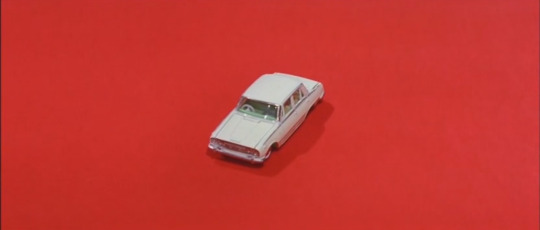





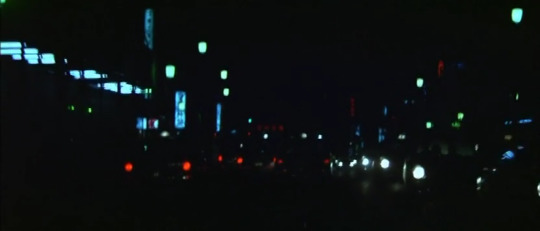
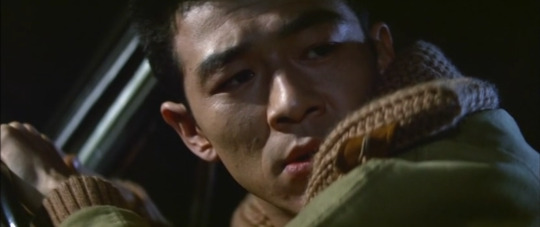

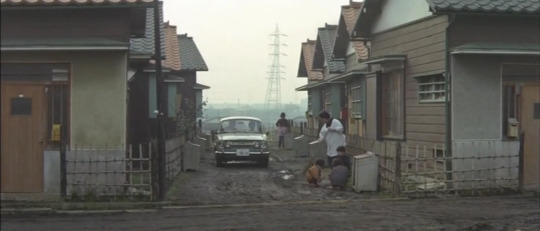


My Bellett (1964)
13 notes
·
View notes
Text
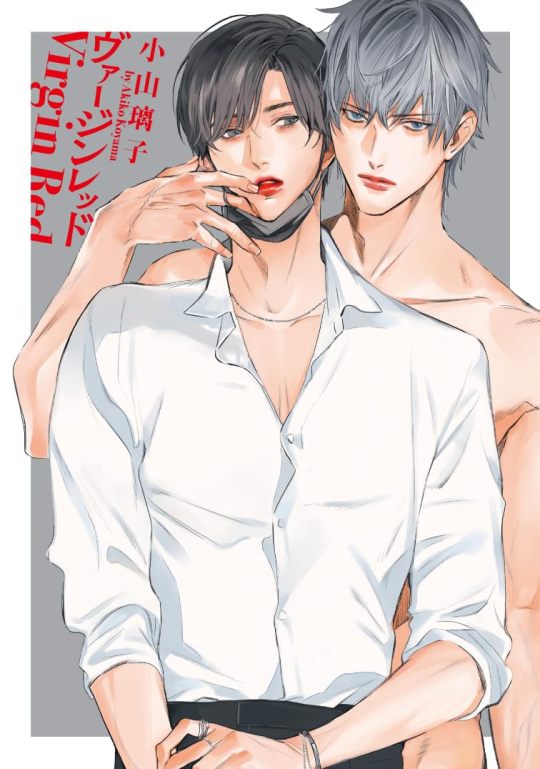
Virgin Red
11 notes
·
View notes
Photo
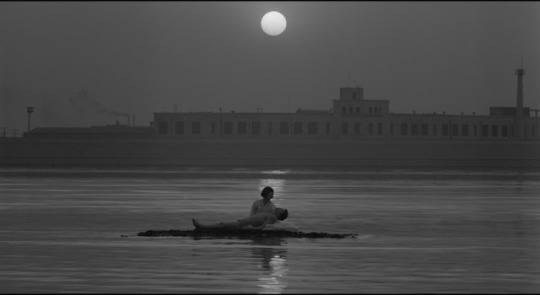
Do-yun Yu and Akiko Koyama in Death by Hanging (Nagisa Oshima, 1968)
Cast.: Do-yun Yu, Kei Sato, Fumio Watanabe, Hosei Kamatsu, Rokko Toura, Ishiro Ishida, Masao Adachi, Akiko Koyama. Screenplay: Michinori Fukao, Mamoru Sasaki, Tsutomu Tamura, Nagisa Oshima. Cinematography: Yasuhiro Yoshioka. Music: Hikaru Hayashi.
Nagisa Oshima is one of the great artists of the second half of the 20th century whom nobody has heard of. That's an exaggeration, of course: Lots of cinéastes and students of Japanese film obviously know Oshima's work, but ordinary people who pride themselves on their knowledge of Kurosawa or Ozu often know little about him, unless it's his English-language film starring David Bowie, Merry Christmas, Mr. Lawrence (1983). Maybe it's because Oshima doesn't lend himself to easy description: You can't take any one of his films as representative of the style and content of any of the others. There's a vast difference between the harrowing upperclass family drama The Ceremony (1971) and the poignant account of an abused child's initiation into crime, Boy (1969), or between the scathing look at rootless Japanese young people in Cruel Story of Youth (1960) and what is probably Oshima's best-known film in the West, the sexually explicit In the Realm of the Senses (1976). His willingness to experiment has tagged Oshima as the Japanese Jean-Luc Godard, but he seems to me more the heir to the great modernists of the early-to-mid-20th century: Kafka, Joyce, Faulkner, Brecht, Genet. Certainly Death by Hanging has been singled out as "Brechtian" for its outrageous transformation of politically charged subject matter, capital punishment, into something like tragic farce. It's also "Kafkaesque" in its lampoon of bureaucrats. But mostly it's an audacious transformation of a polemic into an uproarious and finally sad satire. The protagonist (Do-yun Yu) is called "R.," which immediately brings to mind Kafka's "K." He has raped and murdered two young women and is about to hang in the Japanese prison's scrupulously neat death house. But the hanging doesn't take: R. simply doesn't die, and in the ensuing confusion, none of the prison officials knows what to do. There's a flurry of arguments about whether, having survived the hanging, he's even still R., his soul presumably having left the body after the execution. Things grow still more problematic after R. emerges from a post-hanging coma and doesn't remember who he is. Can they hang him again? Much of this hysteria is over-the-top funny, especially the determination of the Education Officer, played with farcical broadness by Fumio Watanabe, to restore R.'s memory by re-creating his past and his crimes. He was the son of poor Korean immigrants, and the satire shifts away from capital punishment to the Japanese treatment of Koreans, as the prison staff voices some of the worst prejudices and stereotypes that the Japanese have of Koreans. Eventually, the Education Officer, trying to re-create one of R.'s crimes, murders a young woman himself. But by that time, the film has departed from any resemblance to actuality into symbolic fantasy. It's a very theatrical film in the sense that even when it departs from the confines of the death house, where most of it takes place, and explores the outside world, talk dominates action. But where that might have been a strike against the film, it adds to its claustrophobic quality, the feeling of being plunged deeply into an absurd but entirely recognizable situation. Maybe that should be called "Oshimaesque."
4 notes
·
View notes
Text
Sera Myu Music Festival 2022 Blu-Ray
Event was held at the Shinagawa Prince Hotel Stellar Ball in Tokyo from November 17th – 20th, 2022.
I missed it by less than two weeks since I wasn't in Japan until December of that year. I doubt I would have stood a chance getting tickets.
Can we also talk about how excited I am to have Japanese Blu-Rays being the same region where I live? Makes it so much easier!!!

Back cover of jacket.

Performance booklet and musical performance dice.

Disc set. The performance on Disc 1. Bonus features on Disc 2. I love how all of them are also huge fans of Sailor Moon. Soundtrack for musical on CD 1. Special performances for the different guests on CD 2.
I haven't see a Sera Myu in a while so a lot of the music was new to me even if it had been out for a few years.

Sailor Moon: Riko Tanaka
Sailor Chibi Moon: Chise Niitsu
Riko Tanaka has a great voice.

Sailor Mercury: Kaon Maekawa
Sailor Mars: Rei Kobayashi
I can't be the only amused that the actress' first name is Rei, right?

Sailor Jupiter: Kisara Matsumura
Sailor Venus: Marin Makino

Sailor Uranus: Shinjyu Terada
Sailor Neptune: Ayana Kinoshita
Sailor Pluto: Chisato Minami
Sailor Saturn: Yuzu Ide
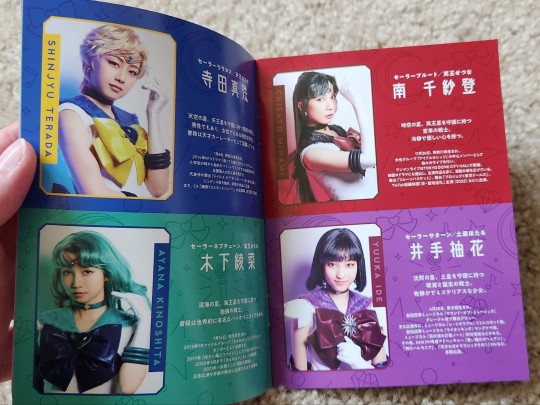
Tuxedo Mask: Riona Tatemichi
Princess Snow Kaguya: Sayaka Okamura
Luna: Yune Sakurai
Human Luna: MARISA
I was fortunate to see Riona Tatemichi perform as part of the America Tour for the Super Live in 2019. I really loved seeing the bonus section with the senshi that were also on tour.

Guest Performances varied by date and time:
November 17 Show 1: Akiko Kosaka, ANZA
November 17 Show 2: Akiko Kosaka, ANZA, Toshino Akamine, Misako Iwana, Emi Kuriyama, Akiko Miyazawa
The original Sera Myu cast performed La Solider on the first night. Loved it!
November 18 Show 1: Tomomi Kasai, Cocona, Yui Hasegawa, Takae Obana, Hoshinami
November 18 Show 2: Shu Shiotsuki, Sayaka Fujioka
November 19 Show 1: Reona Hayashi, Samejima, Yui, Kyoko Ninomiya, Mayuka Ida, Yuko Nakanishi
November 19 Show 2: Yume Takeuchi, Karen Kobayashi, Kaede, Satomomo Hasegawa
November 20 Show 1: Satomi Okubo, Hyakuyo Koyama
November 20 Show 2: Satomi Okubo, Meiku Harukawa, Saki Matsuda
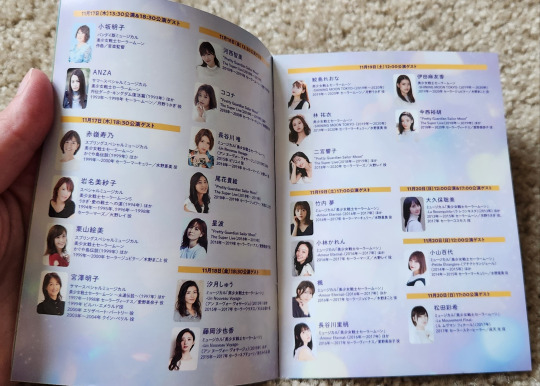
Lyrics
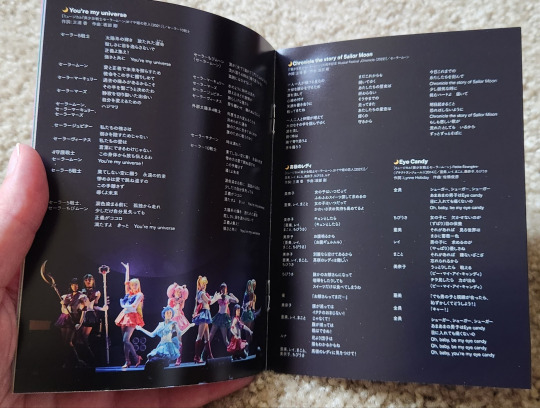
#sailor moon#bishoujo senshi sailor moon#bssm#sailor moon collection#sailor moon collectibles#sailor moon merch#sailor mars#sailor mercury#sailor jupiter#sailor venus#luna#sailor uranus#sailor neptune#sailor pluto#sailor saturn#tuxedo kamen#sera myu#sailor chibi moon#princess snow kaguya#sailor moon musical
4 notes
·
View notes
Text
展示スケジュール 2022
2022
1月
01 | 05 → 01 | 16
bubuchiyo「鳥獣張子」●
01 | 05 → 01 | 30
ショーケース「ダウランド アンド カンパニイ」□
01 | 19 → 01 | 30
余地「紙泳ぐ」●
2月
02 | 02 → 02 | 06
原田淳子「火と水」●
02 | 09 → 02 | 13
フルコチエ「冬のピクニック」●
02 | 16 → 02 | 20
いとうりえこ「after a storm comes a calm」●
02 | 02 → 02 | 20
ショーケース「DOOKS」□
02 | 23 → 02 | 27
kanaexpress「STAMP BY ME 2」●
3月
03 | 02 → 03 | 06
藤原正夫「まがりみち」●
03 | 09 → 03 | 13
kuqi「虚構のくだものシール展」●
03 | 16 → 03 | 20
伊藤満「静願と月」●
02 | 23 → 03 | 27
ショーケース「off note」□
03 | 21 → 03 | 29
春の休暇をいただきます
03 | 30 → 04 | 03
久野真琴 陶展 ●
4月
04 | 06 → 04 | 10
苔むす木工「mono」●
04 | 13 → 04 | 17
守田詠美「チャーミー・スプーン」●
03 | 30 → 04 | 17
ショーケース「夏葉社」□
04 | 20 → 04 | 24
小俣裕祐 写真展「continue」●
04 | 27 → 05 | 01
川﨑和美「あわい」●
5月
05 | 04 → 05 | 08
ポン豆ヤ「春夏秋冬」●
04 | 20 → 05 | 08
ショーケース「となりにある古楽」□
05 | 11 → 05 | 15
ookamigocco「Mix いぬたち」●
05 | 18 → 05 | 22
宇多田理恵「townscape 交差」●
05 | 25 → 05 | 29
Hakoen「いびつな箱庭」●
05 | 11 → 05 | 29
ショーケース「港の人」□
6月
06 | 01 → 06 | 05
髙橋旭陶磁展「おまじないの器」●
06 | 08 → 06 | 12
VRANA 展 ●
06 | 15 → 06 | 19
チチネオ+imuy ono「MEXICOのたまてばこ」●
06 | 01 → 06 | 19
ショーケース「土曜社」□
06 | 22 → 07 | 03
間芝勇輔「UNTIL NOW FROM NOW」●
7月
07 | 06 → 07 | 17
工藤冬里 陶展「lime store mystery」●
06 | 22 → 07 | 17
ショーケース「7e.p.」□
07 | 18 → 07 | 26
夏の休暇をいただきます
07 | 27 → 07 | 31
higurashi「higurashi in Summer」●
8月
08 | 10 → 08 | 14
津田貴司「ざわめく沈黙の白」●
08 | 17 → 08 | 21
MIHANI「みはにのいろいろ展」●
07 | 27 → 08 | 21
ショーケース「カンパニー社」□
08 | 22 → 08 | 25
夏の休暇をいただきます
08 | 26 → 08 | 28
山田春美 + 伊藤満「幻灯の風景」●
9月
08 | 31 → 09 | 11
花松あゆみ「small things」●
09 | 14 → 09 | 18
SIRUP「九月の三角と四角の琺瑯」●
09 | 21 → 09 | 25
藤原喜一郎 磁器展「きどう」●
08 | 31 → 09 | 25
ショーケース「SWEET DREAMS PRESS」□
10月
09 | 28 → 10 | 02
かなおり「ウズマキ」●
10 | 05 → 10 | 16
小方英理子「Play time」●
10 | 01 → 10 | 16
ショーケース「なnD」□
10 | 19 → 10 | 23
nagamori chika「冬隣る(fuyutonaru)」●
10 | 26 → 10 | 30
おくまゆみ「誰かのための物語」●
11月
10 | 19 → 10 | 23
aardekleur「3rd exhibition」●
10 | 19 → 11 | 06
ショーケース「PRESSPOP」□
11 | 09 → 11 | 13
深谷望+水野谷八重「陶と漆」●
11 | 16 → 11 | 20
サンダースタジオ「USELESS」●
11 | 23 → 11 | 27
小山暁子「Akiko Koyama ceramic exhibition」●
11 | 09 → 11 | 27
ショーケース「Tea Time」□
12月
11 | 30 → 12 | 11
比留間郁美+武田晋一 ●
12 | 14 → 12 | 25
higurashi「higurashi in FALL」●
11 | 30 → 12 | 25
ショーケース「FLAU」□
12 | 26 → 01 | 03
年末年始の休暇をいただきます
○
過去のイベント
2021年 → ●
2020年 → ●
2019年 → ●
2018年 → ●
2017年 → ●
2016年 → ●
○

FALL
167-0042 東京都杉並区西荻北3-13-15-1F
地図 | 13:00 - 19:00 | 月・火お休み
gallery.fall at gmail.com | fall-gallery.com

1 note
·
View note
Text
MATANGO (ATTACK OF THE MUSHROOM PEOPLE, 1963) – Episode 135 – Decades Of Horror: The Classic Era
“I was confused. I couldn’t decide what to do. Then… I ate them!” Oh, oh. Join this episode’s Grue-Crew – Chad Hunt, Daphne Monary-Ernsdorff, and Jeff Mohr, along with guest host Dirk Rogers – as they journey to a Pacific island and attempt to resist the lure of the deadly mushrooms found in Ishirô Honda’s Matango (Attack of the Mushroom People, 1963) from Toho.
Decades of Horror: The Classic Era
Episode 135 – Matango (Attack of the Mushroom People, 1959)
Join the Crew on the Gruesome Magazine YouTube channel!
Subscribe today! And click the alert to get notified of new content!
https://youtube.com/gruesomemagazine
ANNOUNCEMENT
Decades of Horror The Classic Era is partnering with THE CLASSIC SCI-FI MOVIE CHANNEL, THE CLASSIC HORROR MOVIE CHANNEL, and WICKED HORROR TV CHANNEL
Which all now include video episodes of The Classic Era!
Available on Roku, AppleTV, Amazon FireTV, AndroidTV, Online Website.
Across All OTT platforms, as well as mobile, tablet, and desktop.
https://classicscifichannel.com/; https://classichorrorchannel.com/; https://wickedhorrortv.com/
Synopsis: A group of pleasure-seeking young people is stranded on a mysterious island when their boat crashes. One by one they succumb to the lure of the deadly mushrooms.
Director: Ishirô Honda
Writers: Takeshi Kimura (screenplay); Shin’ichi Hoshi & Masami Fukushima (adaptation); William Hope Hodgson (story by, “The Voice in the Night,” Blue Book Magazine, November 1907); Sakyo Komatsu (uncredited)
Music by: Sadao Bekku
Cinematography by: Hajime Koizumi
Director of special effects: Eiji Tsuburaya
Chief assistant special effects director: Teruyoshi Nakano
Special effects unit production manager: Shigeru Nakamura
Special effects art director/Special effects set decorator: Akira Watanabe
Costume Design/Art Department: Shigeru Komatsuzaki
Selected Cast:
Akira Kubo as Kenji Murai – Professor
Kumi Mizuno as Mami Sekiguchi – Singer
Kenji Sahara as Senzō Koyama – Sailor
Hiroshi Tachikawa as Etsurō Yoshida – Writer
Yoshio Tsuchiya as Masafumi Kasai – Owner
Hiroshi Koizumi as Naoyuki Sakuta – Skipper
Miki Yashiro as Akiko Sōma – Student
Takuzô Kumagai as Doctor (billed as Jiro Kumagai)
Yutaka Oka as Doctor
Keisuke Yamada as Doctor
Hideyo Amamoto as Skulking Transitional Matango
Haruo Nakajima as Matango
Toku Ihara as Transitional Matango
Kuniyoshi Kashima as Transitional Matango
Masaki Shinohara as Matango
Kōji Uruki as Matango
Tokio Ōkawa as Matango
In this episode, your Classic Era Grue Crew is joined by Dirk Rogers, a special effects artist with KNB EFX Group and a long-time friend of the show. As the guest host, Dirk chose Matango for this episode’s topic and with the movie’s use of effects – miniatures, suits, prosthetics, set dressing – it’s easy to see why this is one of his favorites.
Dirk was originally drawn to Matango because it featured a lot of the same players from the Godzilla films. He loves the damp (shall we say moist?) atmosphere, the use of color reminiscent of Mario Bava, the sets, and the miniatures. He’s always loved Matango and feels the English title, Attack of the Mushroom People, doesn’t represent the depth of what you get from the film. Dirk also provides valuable insights into the effects work and the documentation of who did what during the production.
Matango is probably Chad’s first exposure to body horror and the horrors of fungus. He loves the way the story ramps up the terror and the cringeworthy fungus-filled sets. As one of Toho’s best, Matango still holds up for him. Daphne is blown away by the colors and the textures of the mushrooms and the fungi, loving it all over again. Jeff agrees that “Attack of the Mushroom People” sounds kind of hokey and doesn’t represent the depth of the story told in Matango. He loves the concept, the story progression, the creepy and downright icky creatures and fungi, and the movie’s cultural and historical relation to the horrors experienced by the Japanese from the atomic bombs of World War II.
Dirk was turned onto the writings of William Hope Hodgson by this movie as it is developed from Hodgson’s short story, “The Voice in the Night.” During the episode, the crew discusses several versions of this story, all of which are provided through the following links:
Story: https://en.wikisource.org/wiki/The_Voice_in_the_Night
Audio version: https://www.youtube.com/watch?v=ASIfPcyTAH0
Suspicion (TV series, 1957-1958), Episode 24: “The Voice in the Night” (aired 24 March 1958); from the story by William Hope Hodgson; starring James Donald, Barbara Rush, Patrick Macnee, James Coburn. This is a very poor resolution but the Classic Era Grue-Crew still enjoyed it. https://www.youtube.com/watch?v=ssi6_YWrrxc
If you have been motivated by this episode to catch Matango (and you should be), at the time of this writing, it is available to stream from Classic Horror Movie Channel, Tubi, The Criterion Channel, and various PPV sites. In terms of physical media, Matango is available on DVD.
Gruesome Magazine’s Decades of Horror: The Classic Era records a new episode every two weeks. Up next in their very flexible schedule is one chosen by guest host, the one and only Dave Dreher: The Return of Dracula (1958).
Please let them know how they’re doing! They want to hear from you – the coolest, grooviest fans: leave them a message or leave a comment on the Gruesome Magazine YouTube channel, the site, or email the Decades of Horror: The Classic Era podcast hosts at [email protected]
To each of you from each of them, “Thank you so much for listening!”
Check out this episode!
0 notes
Photo

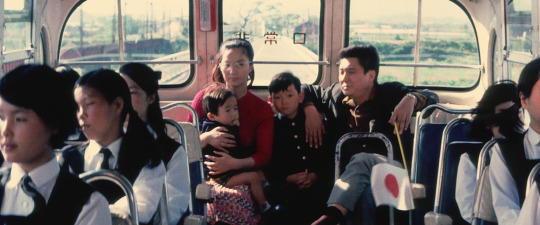
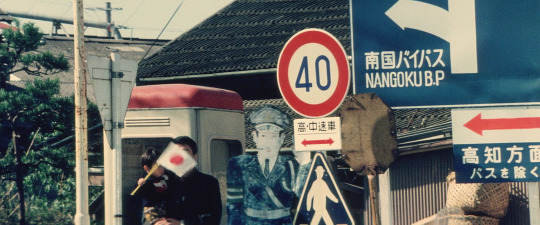
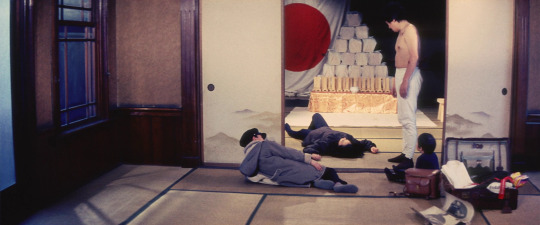



Nagisa Oshima
- Boy
1969
#nagisa oshima#nagisa Ōshima#boy#大島渚#少年#shōnen#art theatre guild#atg#sozosha#創造社#japanese film#日の丸#hinomaru#1969#小山明子#akiko koyama#fumio watanabe#渡辺文雄
91 notes
·
View notes
Text
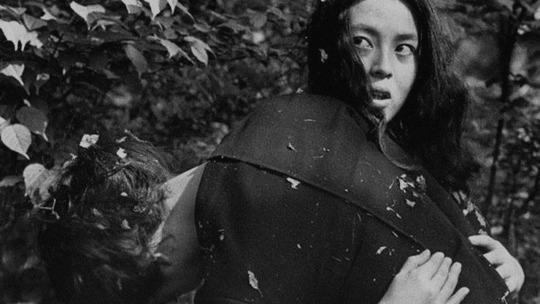
Violence at Noon (1966) dir. Nagisa Ôshima
5 notes
·
View notes
Photo
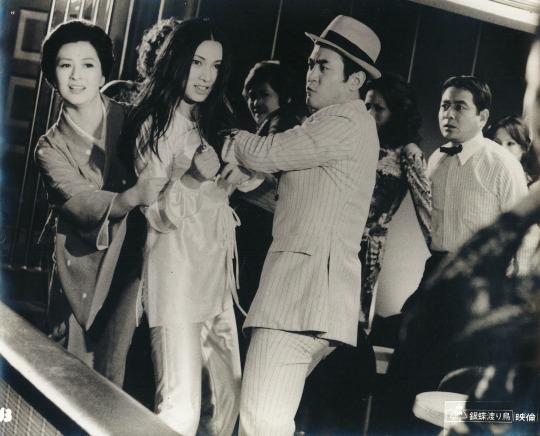
Meiko Kaji (梶芽衣子), Tsunehiko Watase (渡瀬恒彦) and Akiko Koyama (小山明子) in a lobby card for Wandering Ginza Butterfly (銀蝶渡り鳥), 1972, directed by Kazuhiko Yamaguchi (山口和彦).
Scanned by me.
http://fuckyeahmeikokaji.tumblr.com
#Meiko Kaji#梶芽衣子#Wandering Ginza Butterfly#Tsunehiko Watase#Kazuhiko Yamaguchi#Akiko Koyama#銀蝶渡り鳥#渡瀬恒彦#小山明子#山口和彦#lobby card#scanned by me
28 notes
·
View notes
Photo
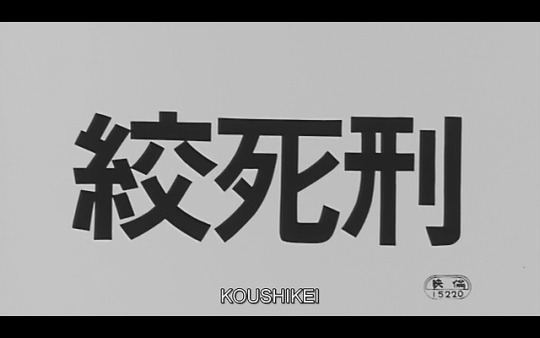
絞死刑 (Death by Hanging) by Nagisa Oshima, 1968
#nagisa oshima#kei satō#akiko koyama#fumio watanabe#masao adachi#do-yun yu#1960s movies#1960s fashion#japanese movie
5 notes
·
View notes
Photo
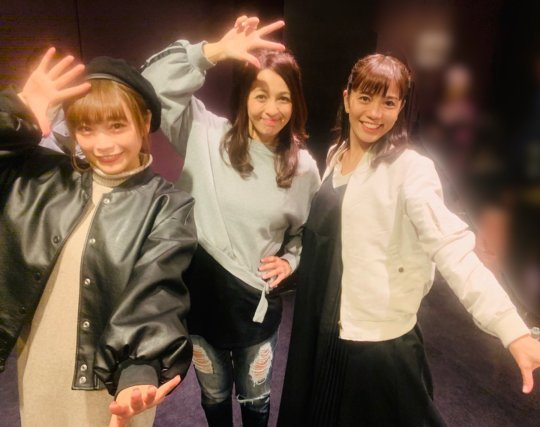
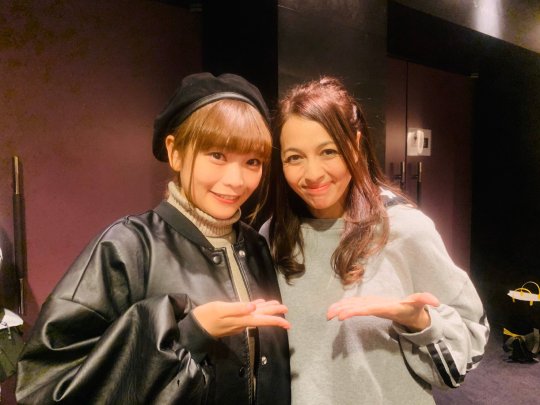


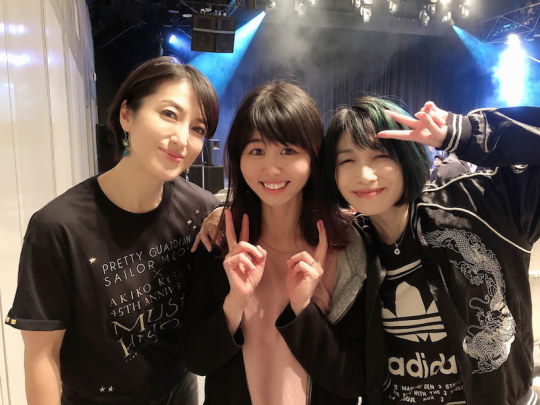
New myu actresses attending the concert!!!
Momoyo Mercury and Asami Kakyuu were in the audience of the Music History concert!
I know Asami had met Momoko before back in LMF, and also Akiko Kosaka at the classic concert, but the other meetings may be a first (and if not, well, it’s never too much)! Btw. Asami has also met Sakoto

ps: I saw no pictures but Nao was in the audience for at least the second day!!
#sailor moon music history#sera myu#momoyo koyama#asami okamura#momoko okuyama#sera myu cast#Sakoto Yoshioka#anza ooyama#sanae kimura#akiko kosaka#bssm
6 notes
·
View notes
Photo
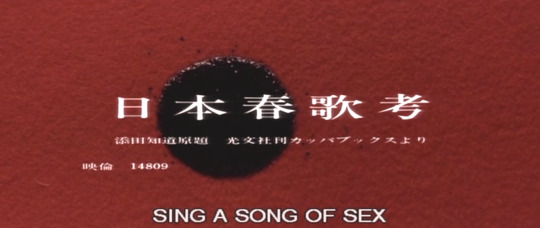

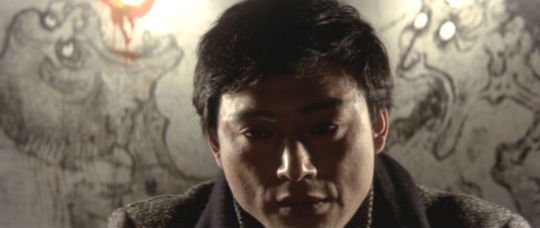

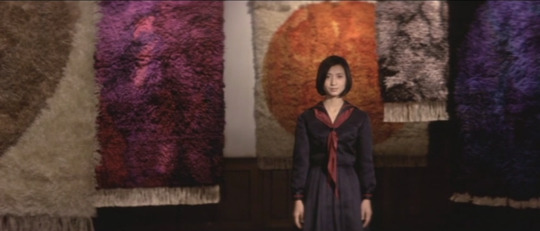


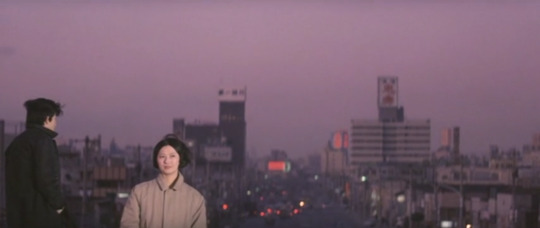


Sing a Song of Sex (1967)
#sing a song of sex#nagisa oshima#Nagisa Ōshima#ichiro araki#juzo itami#koji iwabuchi#akiko koyama#kazuyoshi kushida#nobuko miyamoto#talks
44 notes
·
View notes
Photo
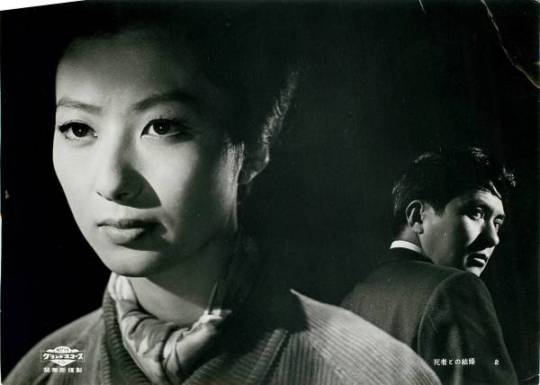
Lobby card for Marriage With The Dead (死者との結婚), 1960, directed by Osamu Takahashi (高橋治) and starring Akiko Koyama (小山明子) and Fumio Watanabe (渡辺文雄).
#Marriage With The Dead#死者との結婚#Shisha To No Kekkon#Osamu Takahashi#高橋治#Akiko Koyama#小山明子#Fumio Watanabe#渡辺文雄#lobby card#Shochiku#japanese movie#japanese film#japanese cinema#classic film#classic japanese film
86 notes
·
View notes
Photo

Tsuyoshi Kinoshita and Tetsuo Abe in Boy (Nagisa Oshima, 1969)
Cast: Tetsuo Abe, Fumio Watanabe, Akiko Koyama, Tsuyoshi Kinoshita. Screenplay: Tsutomu Tamura. Cinematography: Seizo Sengen, Yasuhiro Yoshioka. Music: Hikaru Hayashi.
We meet the 10-year-old title character (Tetsuo Abe) of Nagisa Oshima's Boy when he's playing hide-and-seek with imaginary friends -- the only kind he'll make in the course of the film -- around a war memorial. We don't even learn his name, Toshio, until the end of the film: His family simply refers to him as "the boy." They are on the down and out in increasingly prosperous Japan: The father, Takeo (Fumio Watanabe), is a disabled veteran who has married for a second time and fathered a child, known as "Peewee," with Toshio's stepmother, Takeko (Akiko Koyama). They have cut off ties with their extended family, and when Toshio mentions his grandparents he's told they don't want to see them. They make a living by fraud: Takeko runs into the street to fake being hit by cars, and Takeo bullies the motorists into paying him off instead of calling the police. At a certain point, the parents realize that drivers would be even more willing to pay up if they think they've hit a child, and Toshio agrees to become the pretend victim. They travel around Japan to avoid detection -- too many incidents in one location would cause the police to get wise -- and Oshima's film takes us on this unsentimental journey, going as far as the northernmost point of the country in Hokkaido. The parents squabble constantly, especially when Takeko gets pregnant and decides not to have an abortion, all of which begins to take its toll on Toshio. He runs away several times, always to return: His stepmother gives him cash, to his father's annoyance, so once he tries to buy a ticket to where his grandparents live, but finding himself short of cash he goes only partway, then play-acts a meeting with them before returning to his family. Oshima directs this story, drawn from an actual case of an accident-faking family, with as much detachment as he can muster, but the pathos is inherent to the story, especially since the point of view is that of Toshio. A young non-professional, recruited for the film from an orphanage, Tetsuo Abe gives a remarkable performance, maintaining a precocious stoicism through the worst experiences, but also revealing that there is still a child behind that persona.
0 notes
Text
オリンピック終息宣言2021 Web Gallary INDEX
youtube
2021.2.6-2.14 神楽坂セツションハウスgarden
[オリンピック終息宣言2021]
各作品ページへのINDEXです。
作品写真:阿部尊美 動画撮影:田中芳秀

PART1
4.近藤あき子 KONDO Akiko
「格子 Grid」
「 格子 Grid」
「たとえ天が何回落ちようとも No matter how many skies have fallen」
「怖い怖い」
1. 森田直子 MORITA Naoko
「生きる」
2. 伊藤カイ ITO Kai
「片々となり 粉々になり かけら自身のいのち とりもどし 始まりへ」
https://end-of-olympics.tumblr.com/post/646270156940705792/%E7%B5%82%E6%81%AF%E5%AE%A3%E8%A8%802021-web-gallary-part1
PART.2
3.田島和子 TAJIMA Kazuko
「しずかに ふあん ふる」
5.与那覇大智 YONAHA Taichi
「Home-Codependency 21.1-」
6.安富歩 YASUTOMI Ayumi
「1940年の日本と2020年の日本」
「海の風景ー悪魔の繭はいま孵るー」
https://end-of-olympics.tumblr.com/post/646546064042868736/%E7%B5%82%E6%81%AF%E5%AE%A3%E8%A8%802021%E5%B1%95web-gallarypart2
PART.3
7.櫻川豊敏 SAKURAGAWA Takatoshi
「色を繋ぐ」
「奮えながら横たわる」
8. 戸山灰 KOYAMA Kai
「小さな抵抗 A Small Resistance」
9.吉川和江 YOSHIKAWA Kazue
「window 2020」
11. 宮田昌作 MIYATA Shosaku
「A PORTRAIT of ATHLETE」
https://end-of-olympics.tumblr.com/post/650351539245940736/%E7%B5%82%E6%81%AF%E5%AE%A3%E8%A8%802021%E5%B1%95webgallarypart3
PART.4
10.平井勝正 HIRAI Katsumasa
「反五輪音頭」
「20XX年東京直下大地震後の国立競技場跡」
12.花田伸 HANADA Shin
「drawing 2021 - No.1」
「work 2021 - 1, 2, 3」
13.三木祥子 MIKI Shoko
「eco-cide 21-02-01」
「eco-cide 21-02-02」
https://end-of-olympics.tumblr.com/post/651072755461210113/%E7%B5%82%E6%81%AF%E5%AE%A3%E8%A8%802021%E5%B1%95-web-gallary-part4
PART.5
14.越智祥太 OCHI Sachihiro
「2021 TOKYO OLYMPICS: STADIUM」
「2021 TOKYO OLYMPICS: MARATHON」
「反五輪詩:"ANTI-OLYMPICS"」
15.羊帆 Hitsujiho
「MATATAKI」
16.山崎春美 YAMAZAKI Harumi
「’Til Death」
17.阿部尊美 ABE Takami
「例えばトンボの眼のように #01 For example, like the eye of a dragonfly #01」
「例えばトンボの眼のように #02 For example, like the eye of a dragonfly #02」
https://end-of-olympics.tumblr.com/post/651979922649317376/%E7%B5%82%E6%81%AF%E5%AE%A3%E8%A8%802021%E5%B1%95-web-gallary-part5
PART.6
18.坂内美和子 SAKAUCHI Miwako
「渦 vortex Ⅰ」
「渦 vortex Ⅱ」
「渦 vortex Ⅲ」 19.堂免修 DOMEN Osamu
「見えないものとの対話『赤い月』」
「見えないものとの対話『青い月』」
https://end-of-olympics.tumblr.com/post/652797224484503552/%E7%B5%82%E6%81%AF%E5%AE%A3%E8%A8%802021%E5%B1%95-web-gallary-part6
PART.7
20.川村紗智子 KAWAMURA Sachiko
「再生 Rebirth」
21.多田正美 TADA Masami
「Sound Encounter」
22.飯沼知寿子 IINUMA Chizu
「Perspective of the Family State」
https://end-of-olympics.tumblr.com/post/653338005407432704/%E7%B5%82%E6%81%AF%E5%AE%A3%E8%A8%802021%E5%B1%95-web-gallary-part7
「オリンピック・パラリンピック もうひとつの歴史(リーフレット版)」 https://end-of-olympics.tumblr.com/post/654881233047846912/%E7%B5%82%E6%81%AF%E5%AE%A3%E8%A8%80%E5%B1%952021-web-gallary
2 notes
·
View notes
Text
2022 | 11 | 23 WED → 11 | 27 SUN
Akiko Koyama
ceramic exhibition
小山暁子
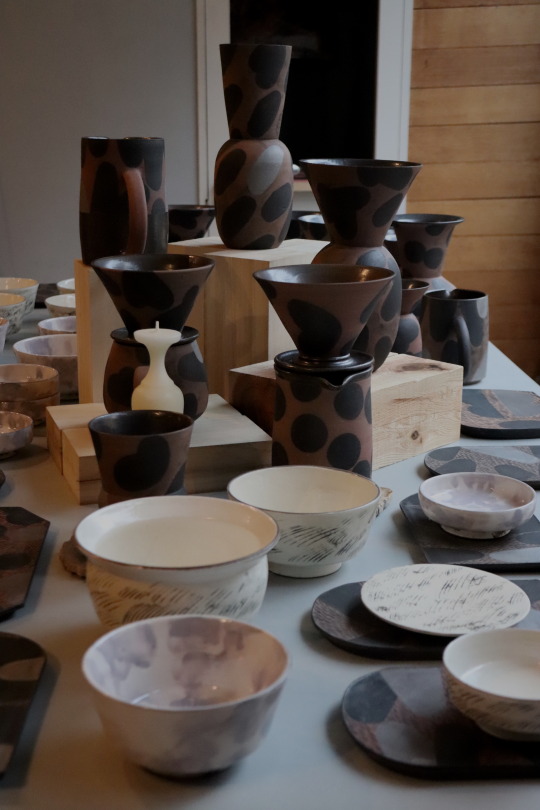
2022 | 11 | 23 WED → 11 | 27 SUN
OPEN 13:00 - CLOSE 19:00
FALL
○
陶芸家の小山暁子さんによる個展です。
久しぶりのFALLでの個展。今回の個展では、定番のシリーズの他に新たなシリーズのプレートやカップなど日々の食卓で活躍する作品を中心にご紹介します。(DMより転載)
2020年の展示「Winter Scenery」のようすはこちら。
→ 今後の展示やイベントの予定
○
小山暁子
Akiko Koyama
東京生まれ。女子美術大学大学院修士課程陶造形領域修了。伊集院真理子に師事。その後、女子美術大学工芸専攻陶コース助手を経て、現在は同大学非常勤講師。東京郊外にて作陶中。

instagram.com/akikokoyama.japan
○
在廊日
11月23日(水)26日(土)27日(日)に在廊予定です。
くわしい時間などは作家のインスタグラムなどでご確認ください。
○




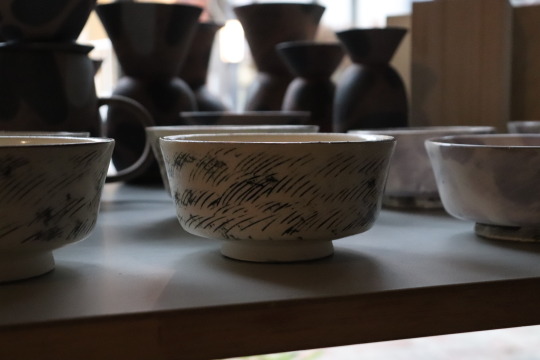


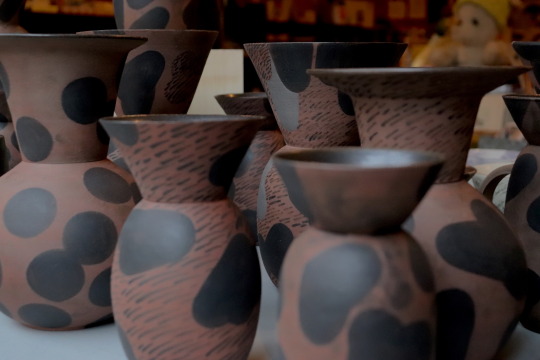

○
展示はがき
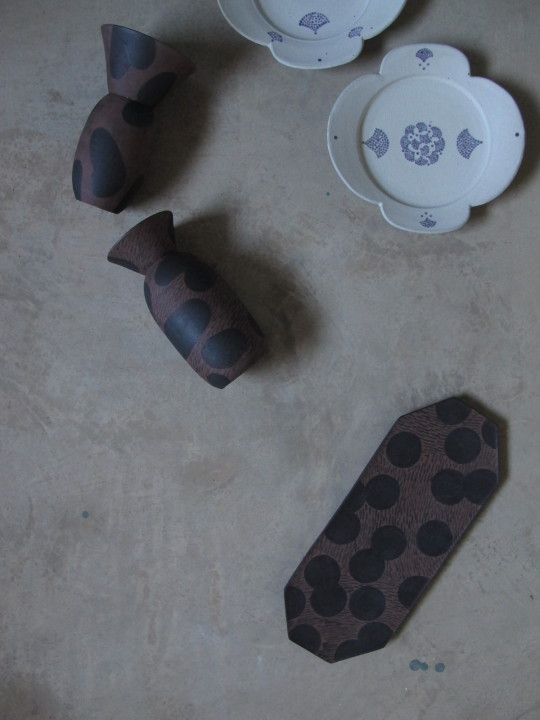
○

FALL
167-0042 東京都杉並区西荻北3-13-15
地図 | 13:00 - 19:00 | 月・火お休み
gallery.fall at gmail.com | fall-gallery.com

○
SNS
→ twitter.com/gallery_FALL
→ instagram.com/fall_mishina/
0 notes